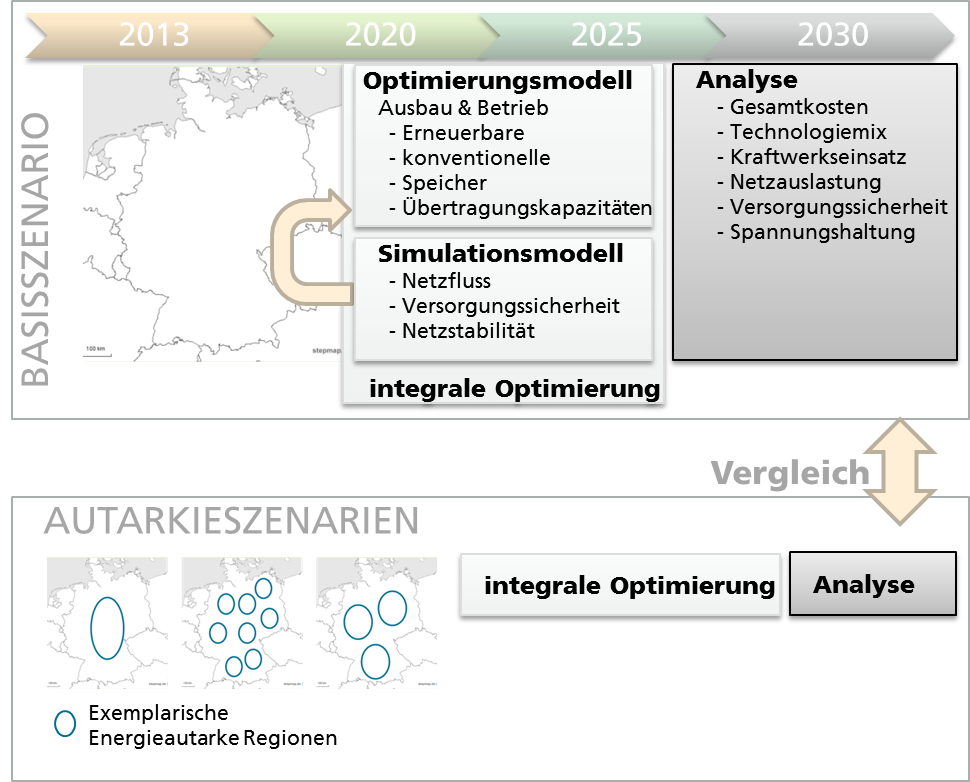| Duration: | May 2015 - December 2018 |
| Contracting Authority / Sponsors: | German Federal Ministry of Education and Research (BMBF) |
| Project Partners: | Zentrum für Interdisziplinäre Risiko- und Innovationsforschung (ZIRIUS) |
AutGrid – Opportunities and Risks of Grid Autarky in Germany
Numerous communities, regions, increasingly also cities placed the target to shift their energy supply towards a renewable technologies based system. 100 % renewable energy regions (100% EE-Regionen), bio energy villages (Bioenergiedörfer) and also cities like Flensburg or Frankfurt Main set ambiguous targets for their energy supply and CO2 reduction. Which impact can be derived from this development for the whole energy system in Germany?
The AutGrid project funded by the German federal ministry of education and research analyses the observed progressions related to the renewable energy regional development. The project is conducted by the Fraunhofer ISE together with the social scientific research institute ZIRIUS of the university of Stuttgart. Socio scientific research will be carried out, which considers drivers of energy autarky and their interdependencies, using expert interviews and workshops. Based on this analysis consistent context scenarios will be simulated, showing the location of the regions, the extent of autarky and the development until 2050.
With a high resolution optimization model, developed at the Fraunhofer ISE, the impacts of the identified scenarios will be analysed and the implications on the German energy system will be assessed. The focus of the investigation is on comparing the scenarios in regard of system cost, necessary grid extension, the utilization of the grids as well as the resulting technology portfolio. The analysis leads to explicit recommendations for direct or indirect support of autarkic renewable energy regions. Additionally a qualitative analysis of the chances and risks, resulting from energy autarky, is carried out.
